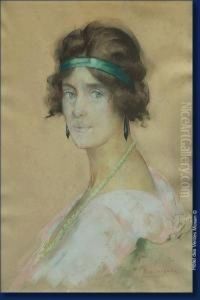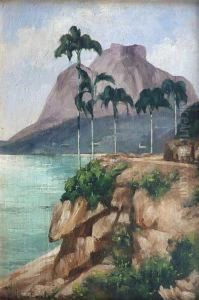Henri Van Haelen Paintings
Henri Van Haelen was a Belgian artist born in 1872. His career spanned the late 19th and early 20th centuries, a period marked by rapid changes in the art world, including the emergence of modernism. However, detailed information about his early life, including his education and training in art, is not widely documented, which is common for many artists of this period whose lives were not as prominently recorded as their more famous contemporaries.
Van Haelen's artistic output was diverse, encompassing painting, printmaking, and drawing. He was known for his landscapes, portraits, and still lifes, showing a versatility in both subject matter and technique. His style evolved over the years, reflecting the influences of the various art movements of his time, though he never became strongly associated with a single style or movement. Instead, his work is characterized by a personal interpretation of the subjects he depicted, infused with a sense of realism and attention to detail.
Despite his talent, Henri Van Haelen remained relatively obscure in the broader context of European art history. His works were appreciated in local and national circles, and he participated in exhibitions, but he did not gain the international renown of some of his contemporaries. Today, his art is primarily found in Belgian collections, both private and public, and is of interest to scholars researching the period and region's art history.
Henri Van Haelen passed away in 1946, leaving behind a modest but significant body of work. His contributions to Belgian art during a time of great change are recognized by art historians, and his works continue to be studied for their unique blend of traditional craftsmanship and individual expression. Though not a household name, Van Haelen's art offers valuable insights into the cultural and artistic landscape of Belgium in the late 19th and early 20th centuries.

